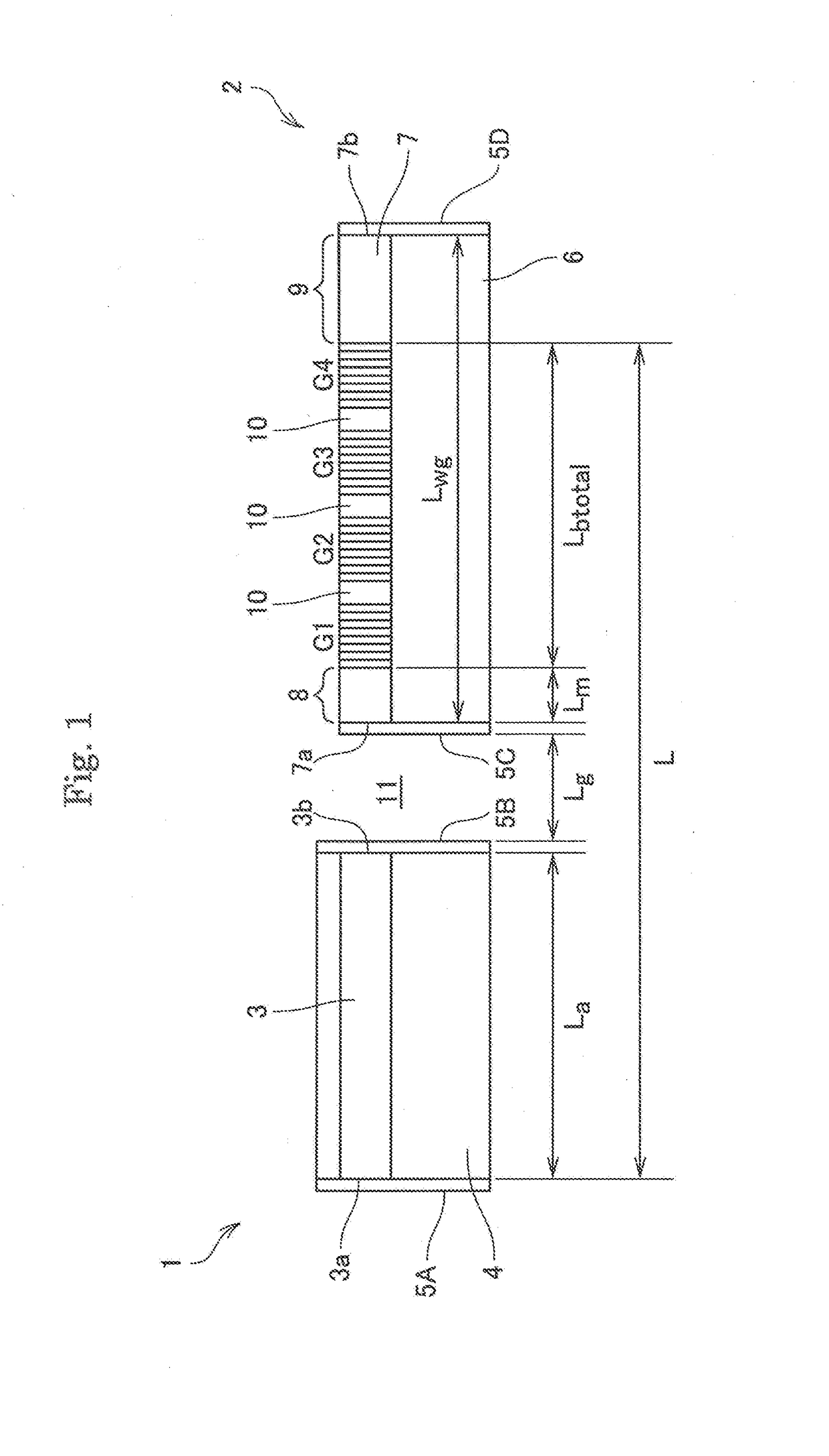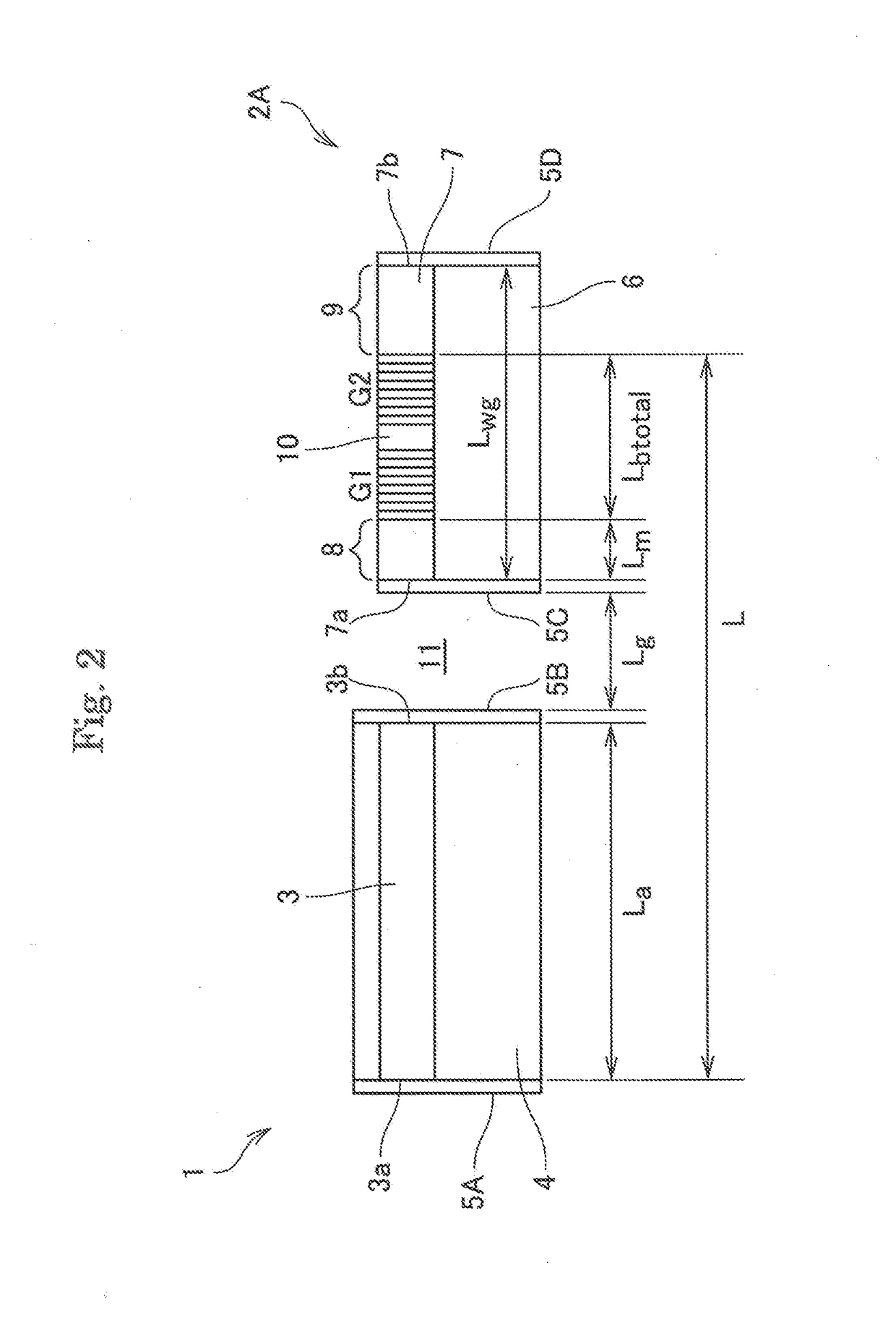External-resonator-type light-emitting device
a technology of external resonator and light-emitting device, which is applied in the direction of instruments, semiconductor lasers, optical elements, etc., can solve the problems of difficult to respond to a wide range of temperature changes, limit the improvement of temperature stability of the whole of the external resonator-type light-emitting device, etc., so as to improve the stability of the temperature as a whole device, the effect of enlarging the wavelength region
- Summary
- Abstract
- Description
- Claims
- Application Information
AI Technical Summary
Benefits of technology
Problems solved by technology
Method used
Image
Examples
example 1
[0162]The external resonator type laser module was prepared as shown in FIG. 6. The light-emitting device as shown in FIGS. 4 and 15(b) was produced.
[0163]Specifically, a 1 μm thick SiO2 layer as a lower side buffer layer 13 was formed on a supporting substrate 6 formed from quartz by a sputtering apparatus, and a 1.2 μm thick Ta2O5 film was formed thereon to form an optical material layer 30. Next, Ti was film-formed on the optical material layer to prepare grating patterns with an EB lithography apparatus. Then, Ti patterns were used as a mask, and three Bragg gratings G1, G2 and G3 were formed by fluorine-based reactive ion etching. The length of the intermediate propagating portion 10 was 0 μm. The grating groove was set to have a depth td of 200 nm.
G1: Pitch interval Λ 190 nm, length Lb 8 μm
G2: Pitch interval Λ 192.5 nm, length Lb 8 μm
G3: Pitch interval Λ 195 nm, length Lb 8 μm
[0164]Further, in order to form an optical waveguide, reactive ion etching was carried out by the same...
example 2
[0187]The light-emitting device similar to that of the example 1 was produced.
[0188]However, in the grating device, it was formed the following gratings G1 and G2 (refer to FIG. 5). The grating groove was set to have a depth td of 200 nm.
G1=Pitch interval Λ 191 nm, length Lb 6 μm
G2=Pitch interval Λ 193 nm, length Lb 6 μm
[0189]As to optical characteristics of the grating element, a super luminescence diode (SLD) as a wide band wavelength light source was used, and output light was analyzed with an optical spectrum analyzer by inputting light in the TE mode to the grating element to evaluate reflection characteristics from the transmission characteristics.
[0190]The reflection central wavelength of measured grating element was 791 nm, its maximum reflectance was 30%.
[0191]Next, in order to evaluate characteristics of the external resonator type laser in which this grating element was used, the laser module was mounted as shown in FIGS. 6 and 19. As a light source element, a GaAs system...
PUM
 Login to View More
Login to View More Abstract
Description
Claims
Application Information
 Login to View More
Login to View More - R&D
- Intellectual Property
- Life Sciences
- Materials
- Tech Scout
- Unparalleled Data Quality
- Higher Quality Content
- 60% Fewer Hallucinations
Browse by: Latest US Patents, China's latest patents, Technical Efficacy Thesaurus, Application Domain, Technology Topic, Popular Technical Reports.
© 2025 PatSnap. All rights reserved.Legal|Privacy policy|Modern Slavery Act Transparency Statement|Sitemap|About US| Contact US: help@patsnap.com



